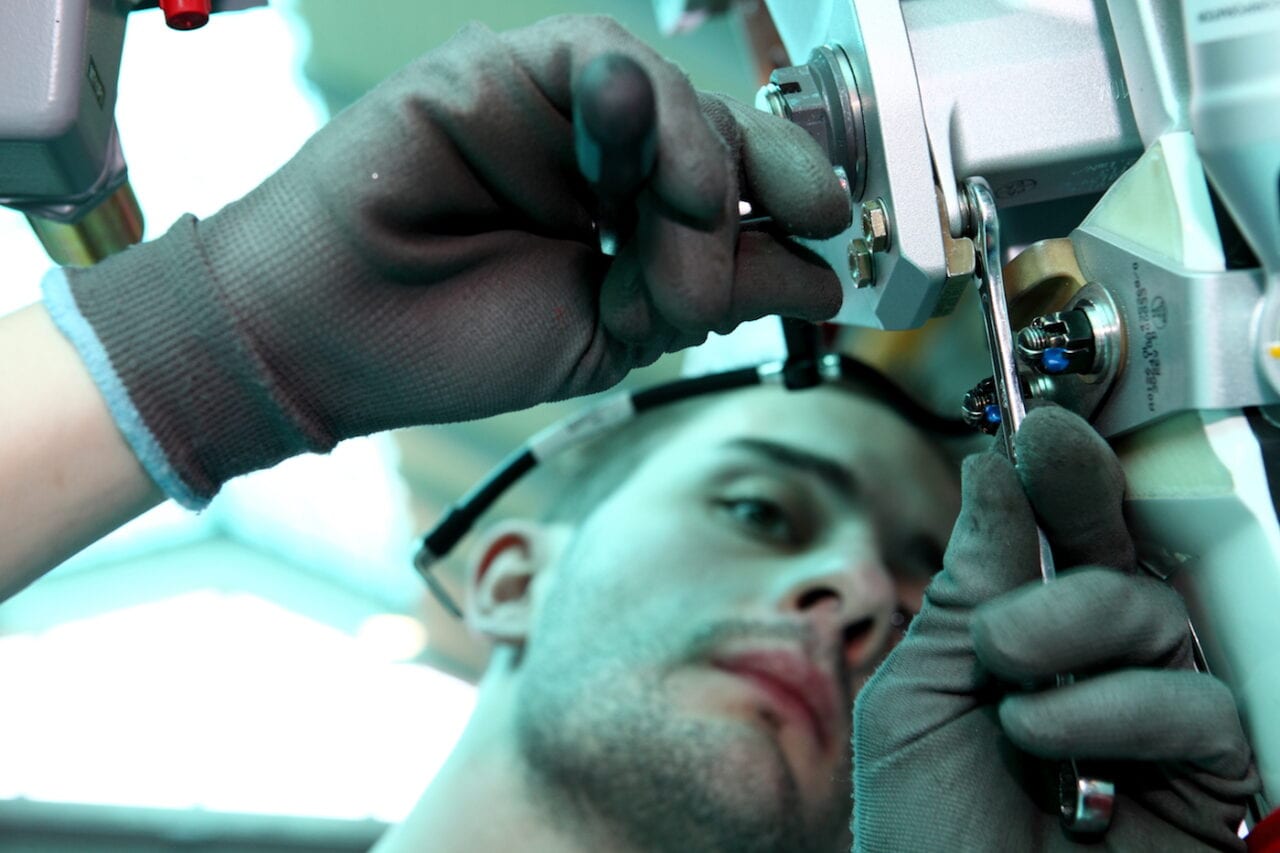
Leonardo’s Advance Services division is developing new connectivity and digital technologies to enable predictive maintenance operations for civil and military helicopter operators. (Leonardo)
Engineers at Leonardo are advancing new digital and connectivity services and techniques designed to introduce the concept of predictive maintenance to in-service civil and military helicopter operators, leadership from within the company’s civil avionics and advanced services divisions told Avionics International during a recent interview.
“We’re not looking to re-invent [health usage monitoring system] HUMS technology for helicopters, that capability has already been designed into our helicopters for years now,” said Simone Gobbi, head of civil aircraft avionics systems engineering for Leonardo.
The ability to acquire performance data, store it and eventually download it for analysis is achieved by the basic aircraft maintenance computer and data transfer device that is featured on all in-production Leonardo helicopter models. Gobbi describes this concept enabled the maintenance computer sitting within the helicopter’s internal network, capable of gathering data from every component and system on the aircraft. Next, the data transfer device transmits data collected by the computer to a maintenance technician who downloads it for analysis from the aircraft.
Until now, that process of acquiring and analyzing data for maintenance purposes by Leonardo operators has primarily been manual. Gobbi said his team is working both internally and externally with several unnamed HUMS, analytics and connectivity technology and modem suppliers on increasing the amount of data their maintenance computer and data transfer can capture, process and transmit in real-time both in-flight and on the ground.
On the development side, Gobbi’s team has focused on adding more flexibility to the configuration files that store data about individual Leonardo helicopter systems inside their aircraft maintenance computer. Recent software updates introduced related to this effort include a “Phase 7” modification to software featured on the AW189 and “Phase 6” is being certified for the AW169.
“We’re developing that connectivity layer,” Gobbi said. “Up until today, all of that HUMS data has been available, but the operator had to arrive with a memory stick to connect to the aircraft and download the package, then go to a computer and upload this data for processing and possible maintenance actions. Now, the connectivity layer we’re developing will give the ability to the system to close the package and prepare the package to be automatically downloaded without the actions of the operator. As soon the system finds the right channel for the download, it transfers it. In-flight that could be 4G or satcom, or the same on the ground with cellular or Wi-Fi.”
While Leonardo’s in-production helicopters already feature the maintenance computer and data transfer device, a modem and connectivity system would be required to enable in-flight or on the ground data transfer in the way that Gobbi described. The avionics engineer also said that they’re evaluating use cases involving the uploading of data to helicopter operators from ground-based systems.
In one scenario, Gobbi described an emergency medical helicopter operator’s flight operations center uploading the coordinates of a search and rescue victim to an in-the-air helicopter’s navigation system.
“If you take an EMS scenario, you could consider looking at our helicopter data chain in reverse for uploading,” Gobbi said. “So the operations center would upload the coordinates, that data is captured by the modem, which sends it to the data transfer device that provides security against that data before verifying it and ultimately passing it onto the avionics. Then from there, the flight management system takes those coordinates and populates them for the pilot who can verify them and fly to the position.”
An effort to further improve Leonardo’s cyber resilience on the cloud computing side of supporting their helicopter operator’s data, the company announced a partnership with CrowdStrike, a provider of cybersecurity endpoint technology designed to protect against enterprise related cloud computing risks. The partnership will see the adoption of CrowdStrike Falcon, a platform that “leverages artificial intelligence (AI) and unifies next-generation antivirus (NGAV), IT hygiene, endpoint detection and response (EDR), cyber threat intelligence and proactive threat hunting via a single, intelligent agent to stop breaches,” according to Leonardo.

HUMS software updates introduced recently on the AW169, pictured here. (Leonardo)
Beyond giving operators the ability to monitor the health of critical components and systems, Leonardo also has interest in expanding its digital services and cloud computing capabilities as an OEM. Data collected in the same way that Gobbi described could be stored and analyzed on a historical basis that would help Leonardo improve the thresholds recorded as a performance or fault exceedances that ultimately trigger maintenance actions over the lifecycle of individual helicopter parts.
“One of the initiatives and we have put aside is helicopter data transmission, and increasing the terabytes of data we already collect from customers so that new helicopter performance data analytics programs, benchmarks and visualization can be introduced,” said Alberto Clocchiatti, capability development manager for Leonardo Helicopters.
Clocchiatti also described Leonardo’s investment in expanding its cloud computing support and eventually developing a data lake where historical data about individual helicopter systems can be leveraged to develop algorithms that automatically trigger maintenance actions. He said the company is investing in expanding its own internal cloud and server storage, while also taking advantage of the “advances of cloud providers worldwide, such as Amazon and Microsoft, among others.”
“One of the key reasons why we’re focused on that real time surveillance of everything that is happening on the helicopters is so that we can improve our ability to forecast and correlate performance data with events that occur in the field,” Clocchiatti said. “This will improve our ability to introduce predictive maintenance as it is called in the market or predictive support, which is a major goal for our Advance Services division.”